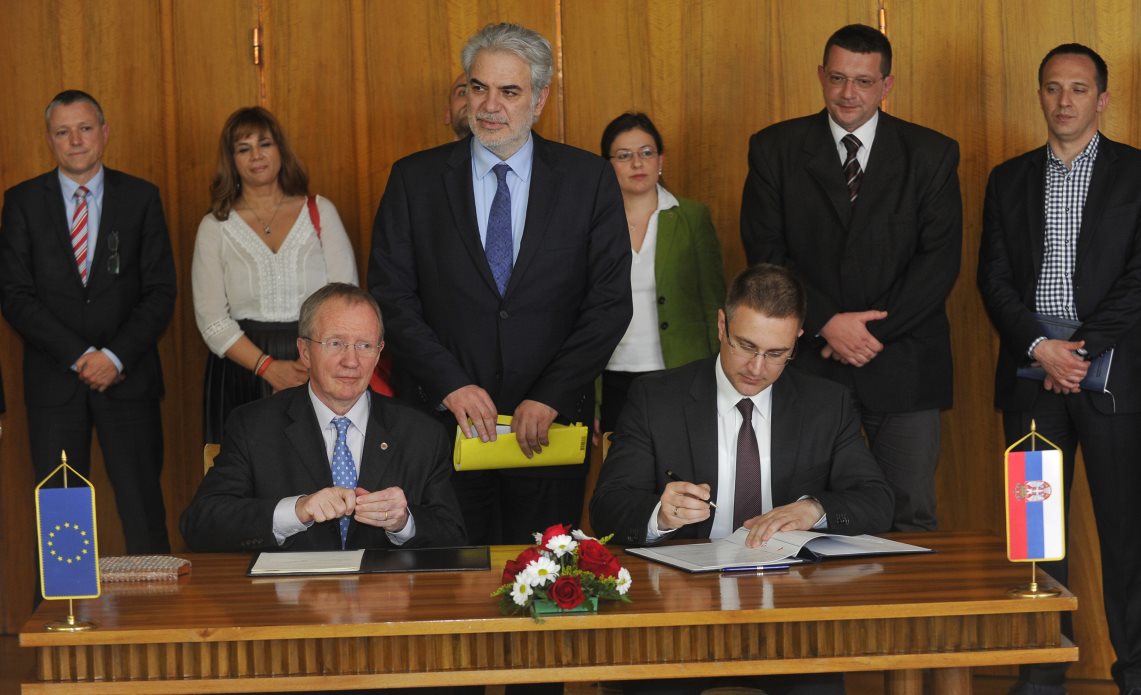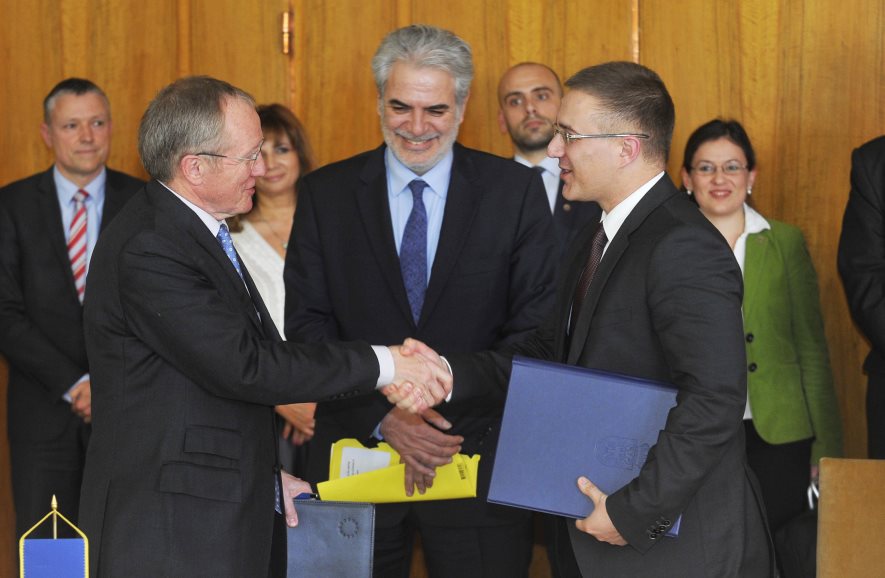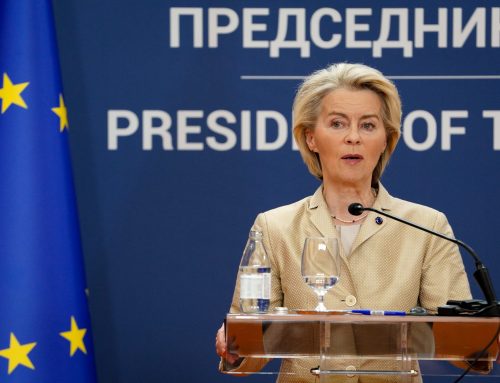Serbia and the European Union signed today an agreement which clears the way for the official membership of Serbia in the EU Civil Protection Mechanism. Once national ratification has been completed, Serbia will become the 33rd participating state in the European cooperation framework for disaster management and response to emergencies.
“At a time of more disasters striking both in Europe and around the world, Serbia’s entry into the Mechanism underscores the strong necessity and desire to work closer together for better prevention, preparedness and response “, said Christos Stylianides, the European Commissioner for Humanitarian Aid and Crisis Management who is in Belgrade today for the signature of the agreement.

Serbia`s Internal Affairs Minister Nebojsa Stefanovic (right) and Claus Sorensen Director General sign Agreement on the participation of Serbia in the Union Civil Protection Mechanism in Palace of Serbia , Belgrade on April, 16. 2015. AFP PHOTO / OLIVER BUNIC
While bringing to the Mechanism expertise and resources, Serbia will also benefit from joint activities such as knowledge exchange and participation in EU-funded trainings and early-warning systems.
Background
The EU Civil Protection Mechanism currently facilitates co-operation in disaster response, preparedness, and prevention among 32 European states (EU-28 plus the Former Yugoslav Republic of Macedonia, Iceland, Norway and Montenegro). With the support of the Commission, the participating states pool the resources that can be made available to disaster-stricken countries all over the world. When activated, the Mechanism coordinates the provision of assistance.
The European Commission manages the Mechanism through the Emergency Response Coordination Centre (ERCC). Operating 24/7, the ERCC monitors risks and emergencies around the world and serves as an information and coordination hub during emergencies.
Serbia has already been on the receiving end of European solidarity via the EU Civil Protection Mechanism when it was hit by devastating floods in May 2014. Most EU Member States offered assistance such as boats, helicopters, pumps and humanitarian kits to Serbia during the emergency operations. More than 800 relief workers from EU Member States were deployed to Serbia and Bosnia and Herzegovina. The European Commission co-financed the transportation of aid to the affected areas. This operation was the largest ever under the Mechanism.
For more information visit The European Commission’s humanitarian aid and civil protection.





